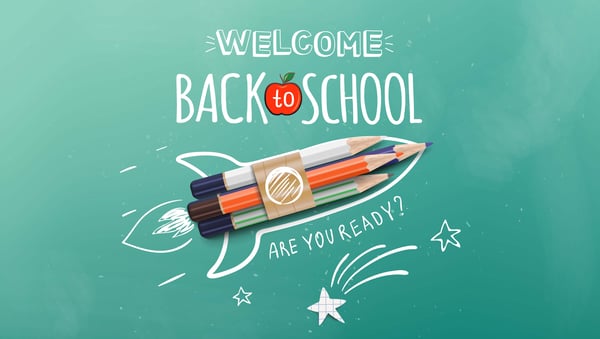Looking for eco friendly school supplies now that classes are back in session? It’s time to get smart with a back to school guide. Learn about the best eco-friendly back to school supplies, how to make greener and healthier lunches, and what you need to do now to get the most energy savings after a change in schedules.
A Guide to Environmentally Friendly School Supplies

Back to school shopping can be a tedious task with long lists of supplies and last-minute errands. Trying to stay sane can feel impossible, but there’s hope. Hang in there and don’t take it all on alone - get the kids involved! Below are three way that you can ease the back to school stress and spark some excitement with your children. These eco friendly school supplies are the way to go!
-
HEALTHY LUNCHES
Let’s face it; most school lunch programs are not gourmet meals. They’ve come a long way, but nothing can compare to mom’s cooking, am I right? Setting aside an extra hour on the weekend to meal prep breakfast and lunches will go a long way with your children and their health. You can find a ton of healthy school lunch ideas on Pinterest that will easily fit into your grocery budget and that your kids can help with!
-
WASTE-FREE LUNCH GEAR
One of the more fun supplies to shop for (and one of the more fun hours in school) is lunch-time accessories! Remember the #1 rule when picking out lunch bags or boxes, BPA free products. Review each lunch kit carefully before you buy to ensure that no other toxic chemicals are present. Amazon is a great place to start your search! Also, avoid sending the kids to school with plastic water bottles. Look for a reusable water bottle that’s BPA free and one that will keep fluids cold. Your kids will enjoy picking out a bottle that suits their personality.
-
SCHOOL ESSENTIALS
When kids join you in shopping for supplies, they feel more empowered and invested in the items they’ll be using. And did you know that most of the required supplies almost always have a greener option available? Below are some helpful tips from Growing A Green Family to pick out non-toxic, eco-friendly supplies that your kids will love.
-
Paper
Almost every paper product your child needs; including notebooks, tissues for sneezes, printer paper, and more can be found in 100% recycled content versions.
-
Conventional paint
Most conventional paints for children can contain toxic chemicals. Look for water-based paints without solvents and make sure they’re colored with natural, non-metal pigments.
-
Glue sticks
Look for basic glue sticks or gentle white or clear glue in a bottle. Water-based glues are a much safer bet than super-strong adhesives such as epoxies, wood-glue, or rubber cement, which tend to contain toxic solvents.
-
Pencils and Pens.
Avoid glossy coated and/or scented pencils. Look for basic wooden pencils made from sustainable wood or recycled newsprint. For pens, aim for recycled and if possible refillable. If looking for colored markers or colored pencils, use the same criteria, and don’t get permanent markers, which are much more toxic than water-based non-permanent.
-
Pencil Cases.
Avoid pencil cases made with plastic or vinyl. Instead look for pencil cases made of organic unbleached cotton, wood, or hemp.
-
Backpacks
Check out Growing A Green Family’s Eco-Friendly Backpacks. In general look for natural fiber backpacks or backpacks made with organic cotton. Avoid excessive plastic and look for labels that say “no PVC” or “no #3” (the PVC symbol).
-
Computers or laptops
Aim for energy-efficient, as small as you can go without hampering usage quality, and PBDE-free computers.
One great tip is to use what you already have! Many of us already have lots of supplies already around the house. Check what you have in stock before hitting the store or shopping online.
Getting your home ready for back to school
It’s easy to place the majority of your focus on preparing your kids for school but getting your home ready for back to school is a real thing, too. Even if you don’t have kids you can use these tips. You don’t have to go full-on home improvement either. As the season begins to change, here are the top three things you can do to maintain an energy-efficient home.
-
Re-program your thermostat.
If you don’t have a smart thermostat, now is the time to invest in one. Programmable thermostats are available for every budget and are worth taking the time to set. Adjust the settings on your programmable thermostat to reflect the change in your routine. When you’re not at home, set your thermostat 3-4 degrees higher to save on your electricity bill.
-
Maintain your HVAC system.
Increase comfort, efficiency, and reliability by having the system inspected, cleaned, and professionally maintained each fall. Keep up with regular air filter changes throughout the seasons, aiming for a monthly change during peak cooling and heating seasons depending on where you live and the recommendations of the manufacturer.
-
Get a home energy audit.
Schedule a professional energy audit to find out where your energy dollars are flowing and identify areas where you can save. Live in an apartment? Do your own “energy audit” by implementing some of these energy-efficient tips that will help you use less energy year-round.
When school starts, there’s a handful of things you just can’t control, and it takes some time to get into a groove. Every family is different, and everyone has to find their own rhythm to perform at their highest level. Your home is the same way. If you can make the time to implement some of these tips now, your entire household will be in tip-top shape this school year.
![Back to school art_244275389 [Converted]](https://www.apge.com/hubfs/Images/Blog/Back%20to%20school%20art_244275389%20%5BConverted%5D.png)